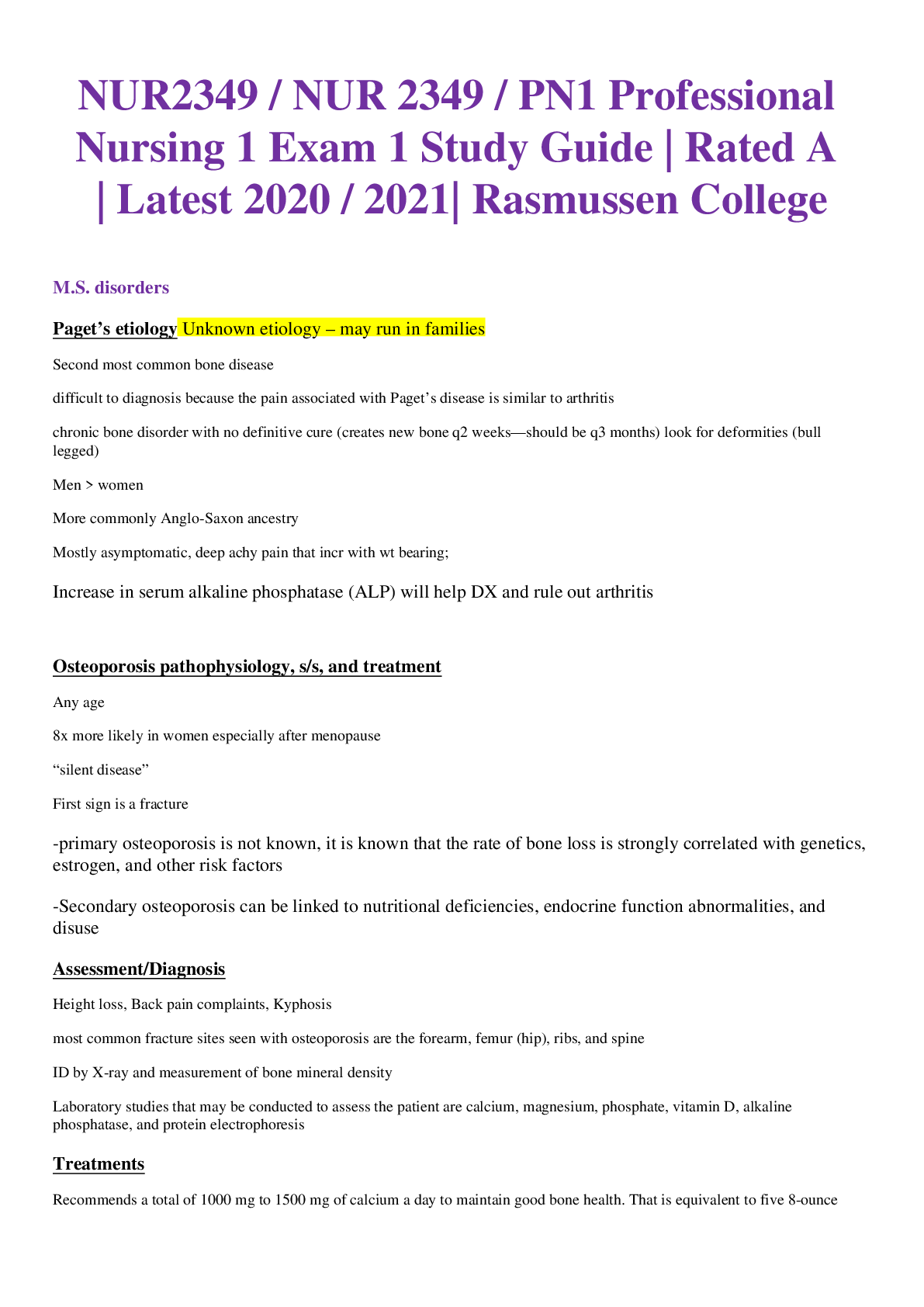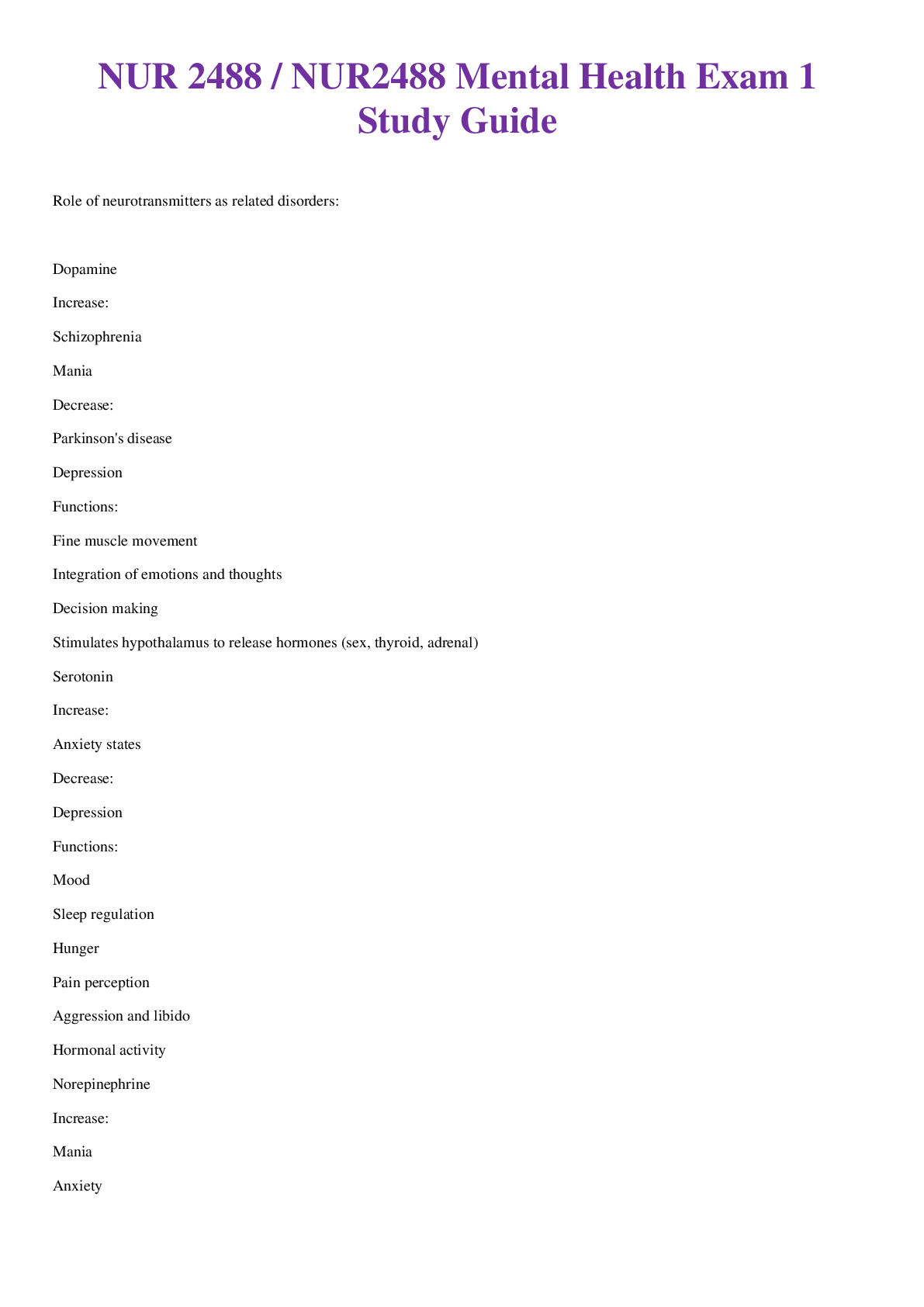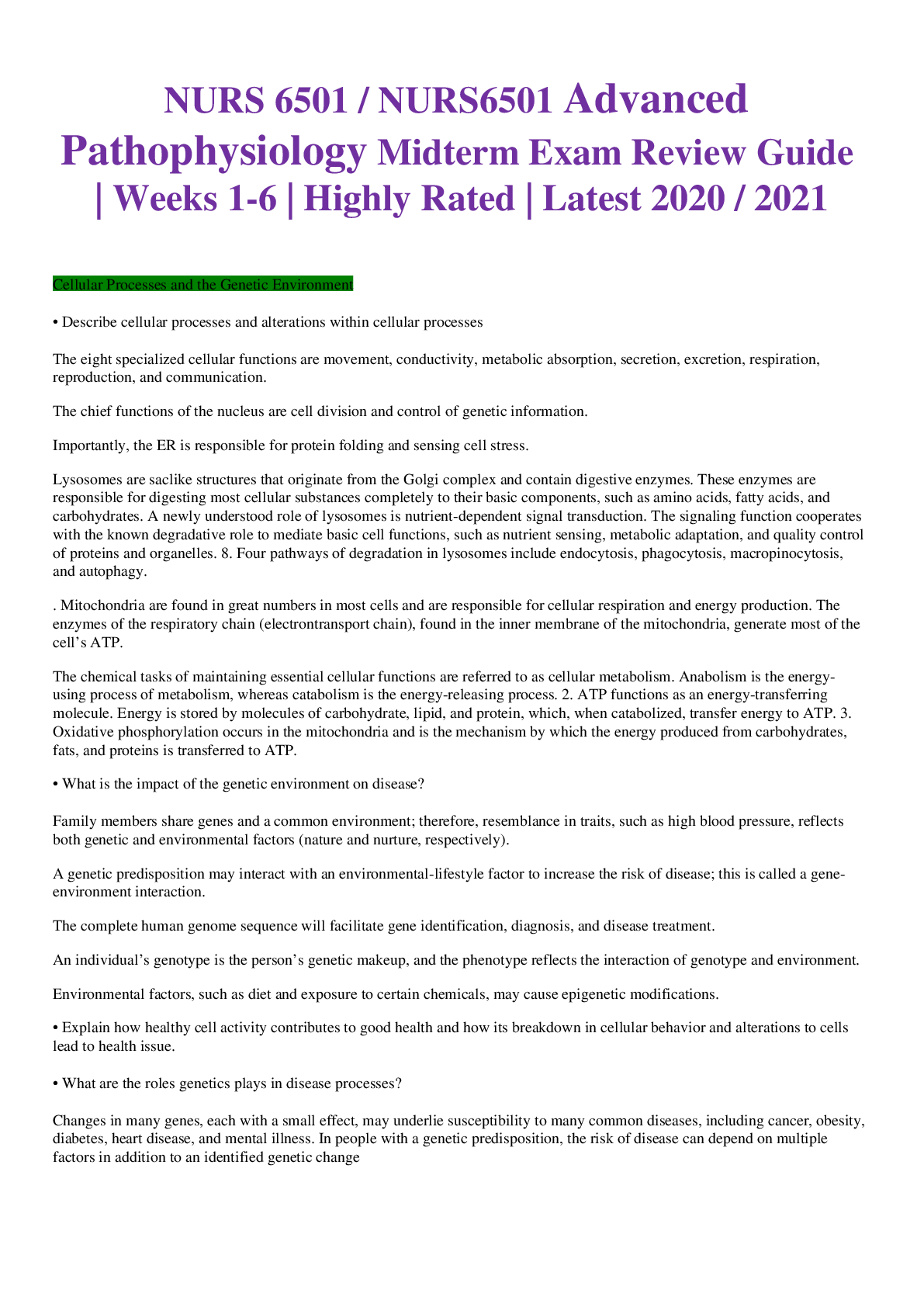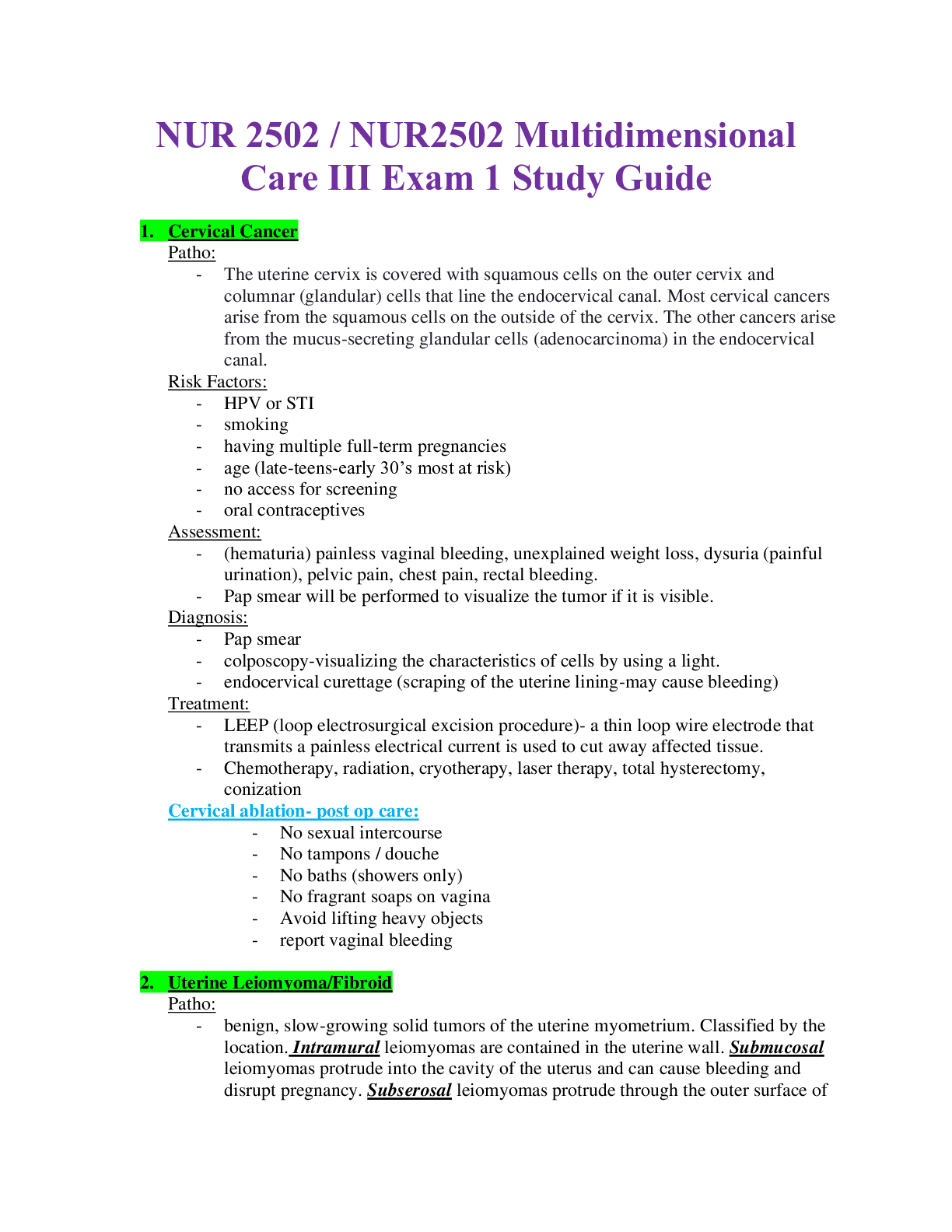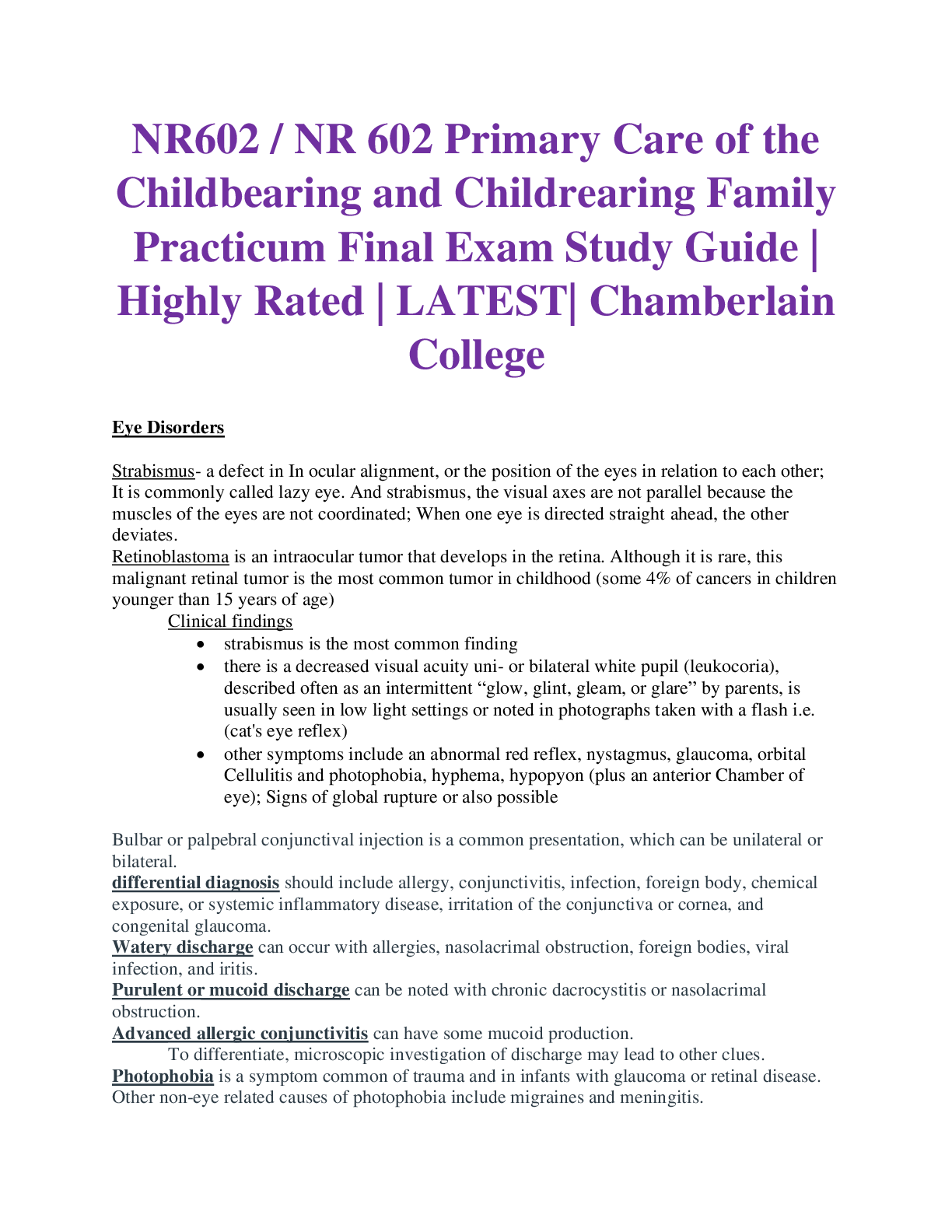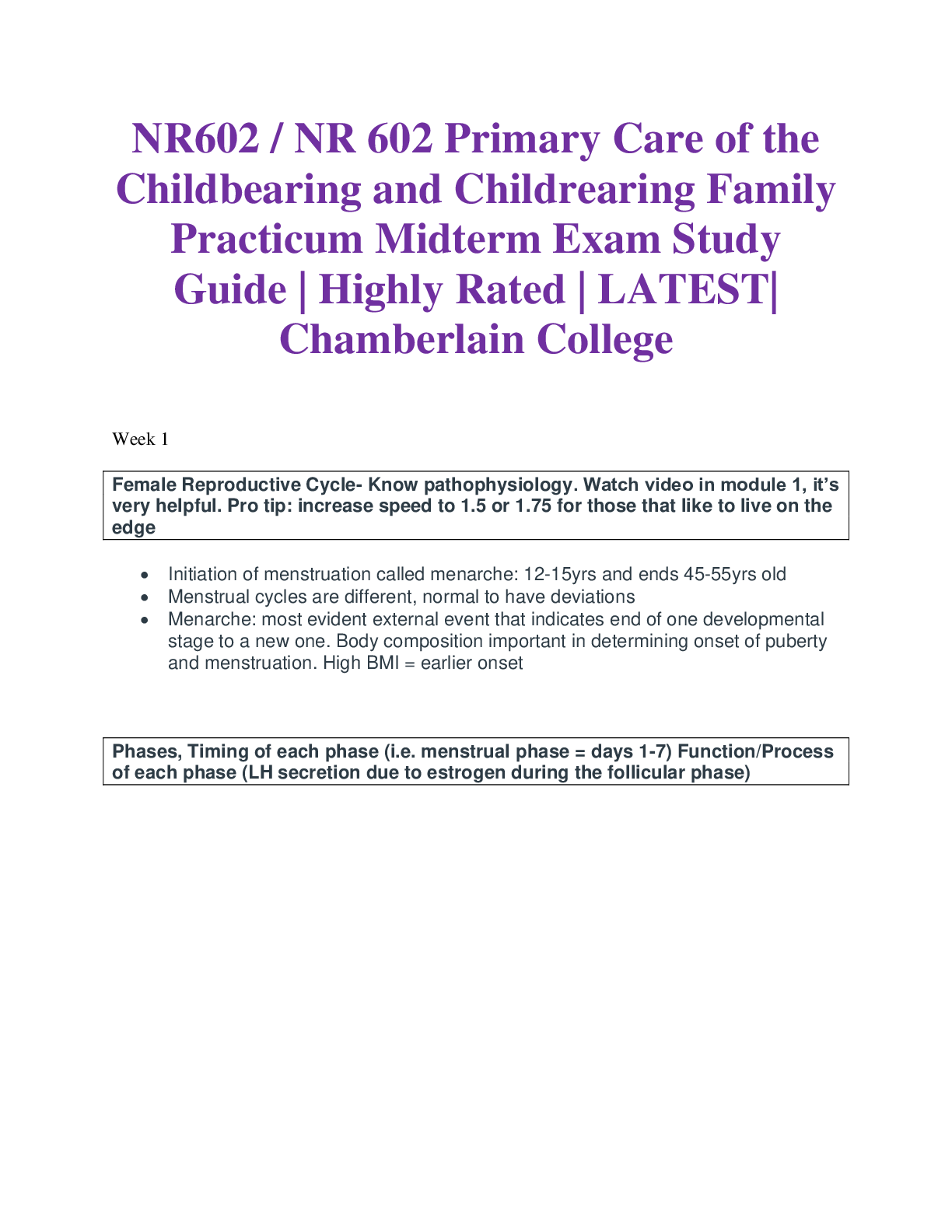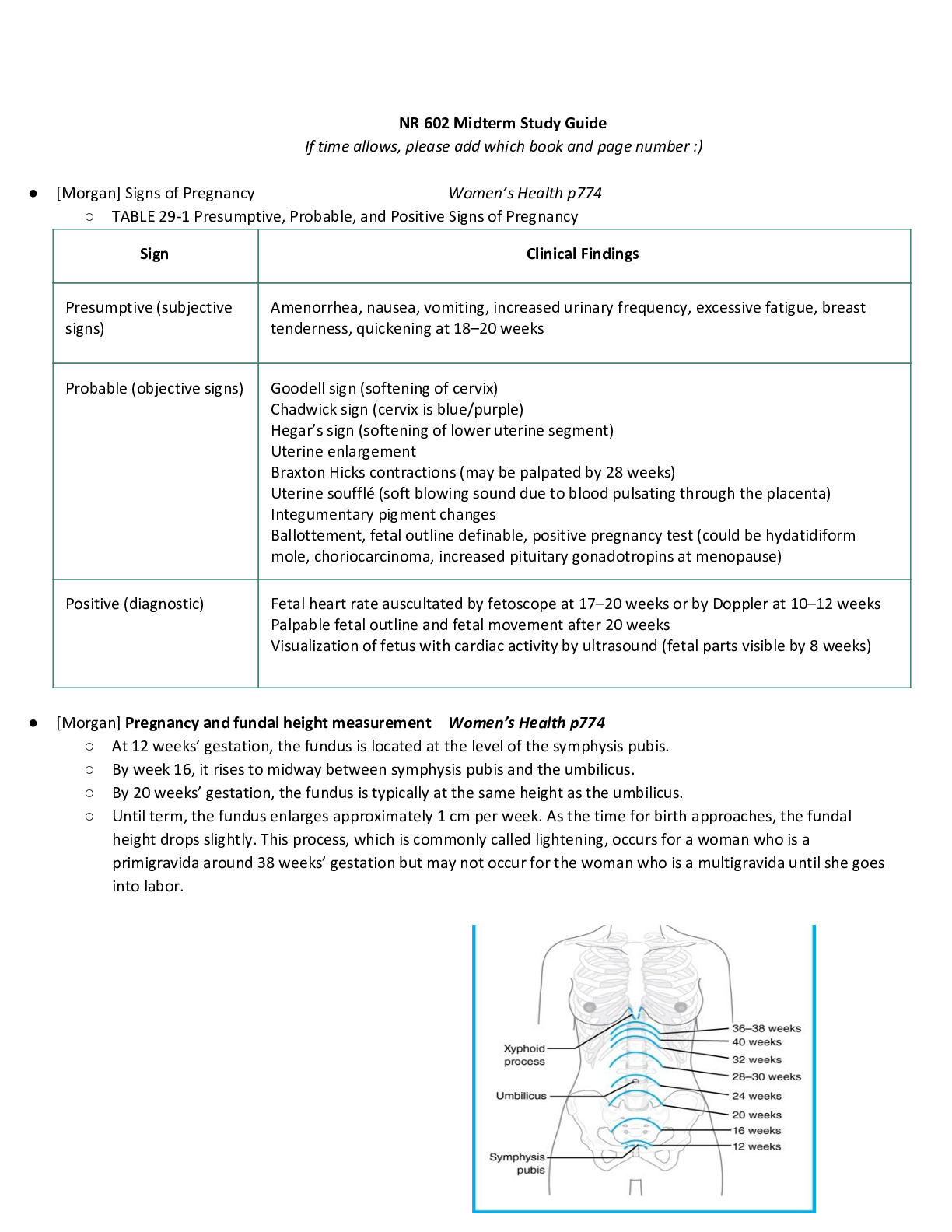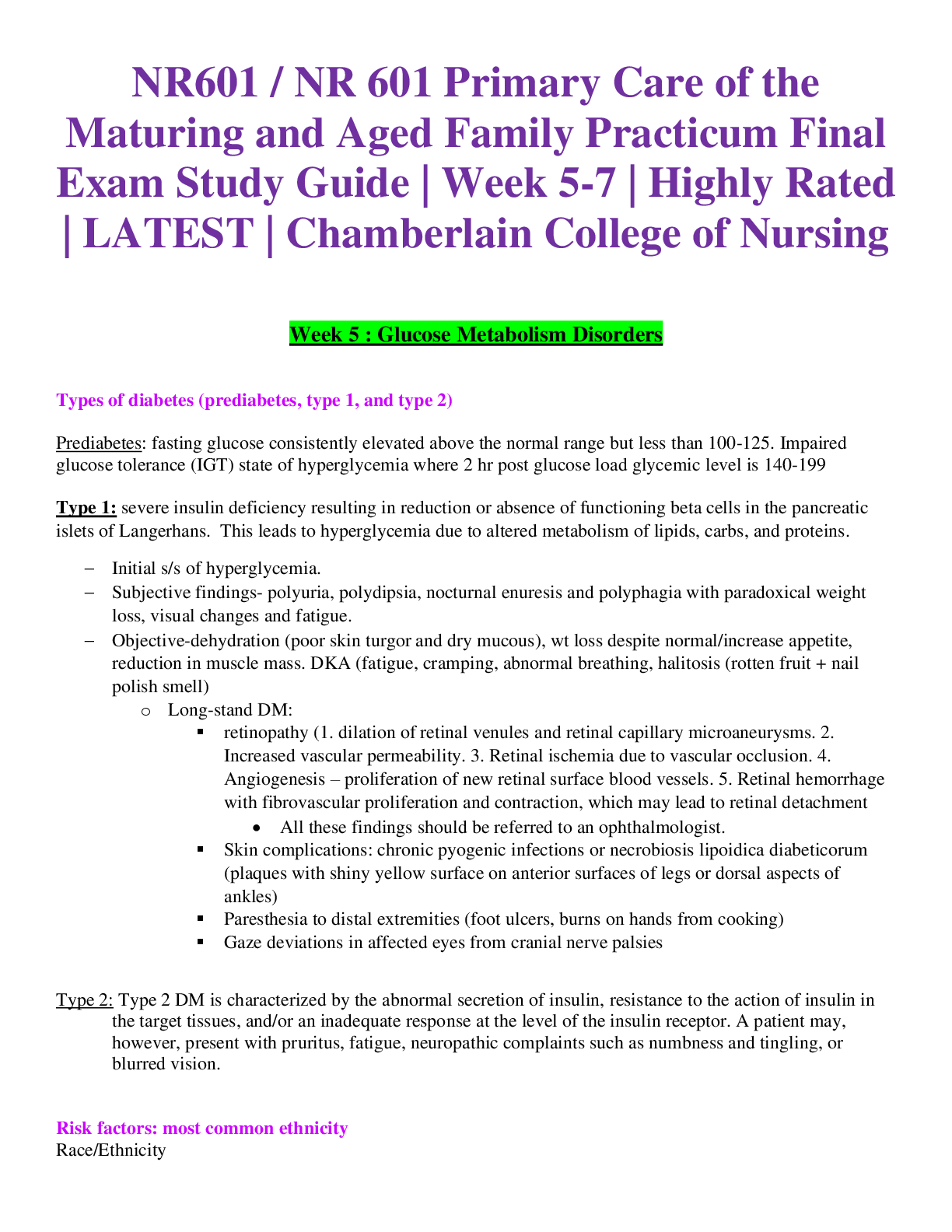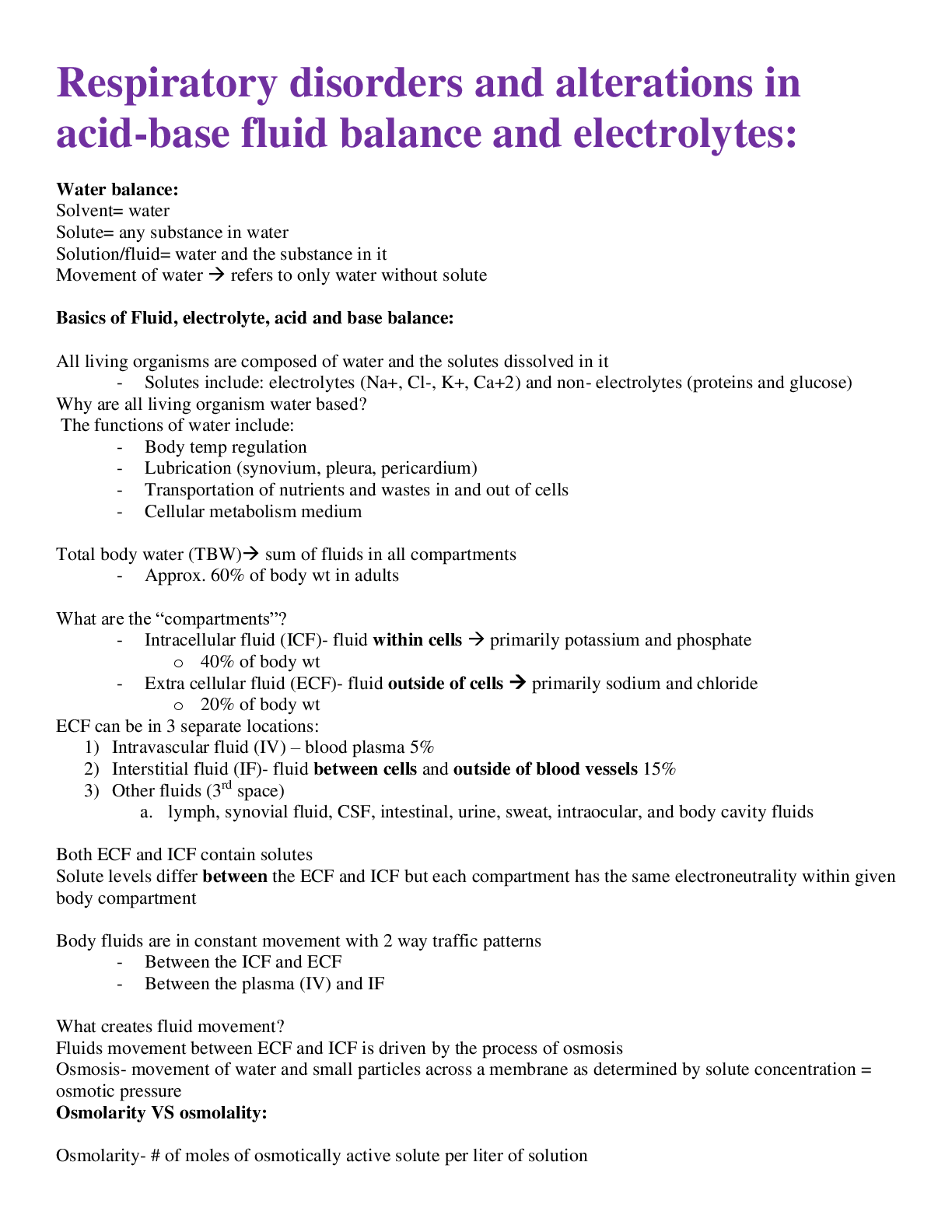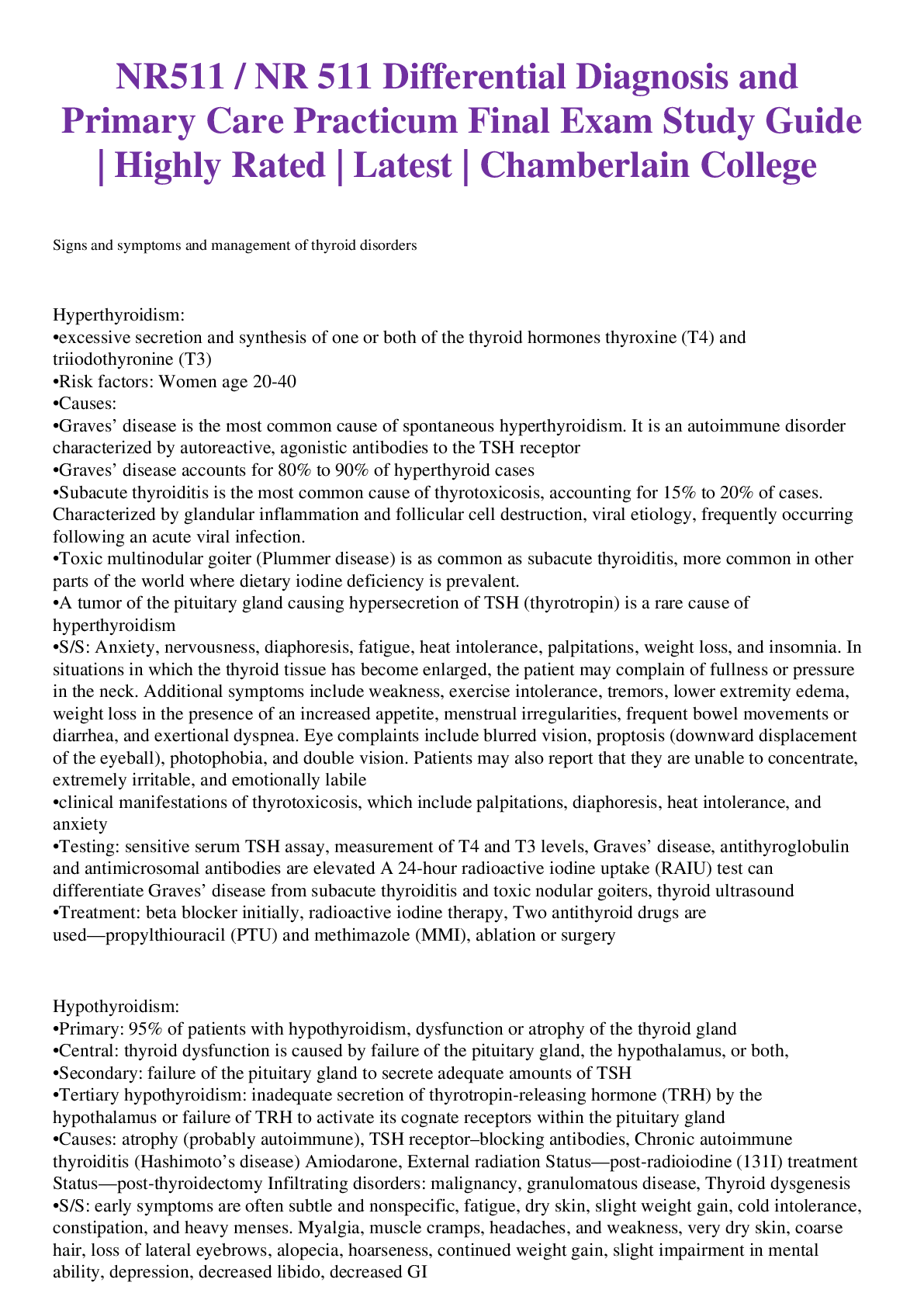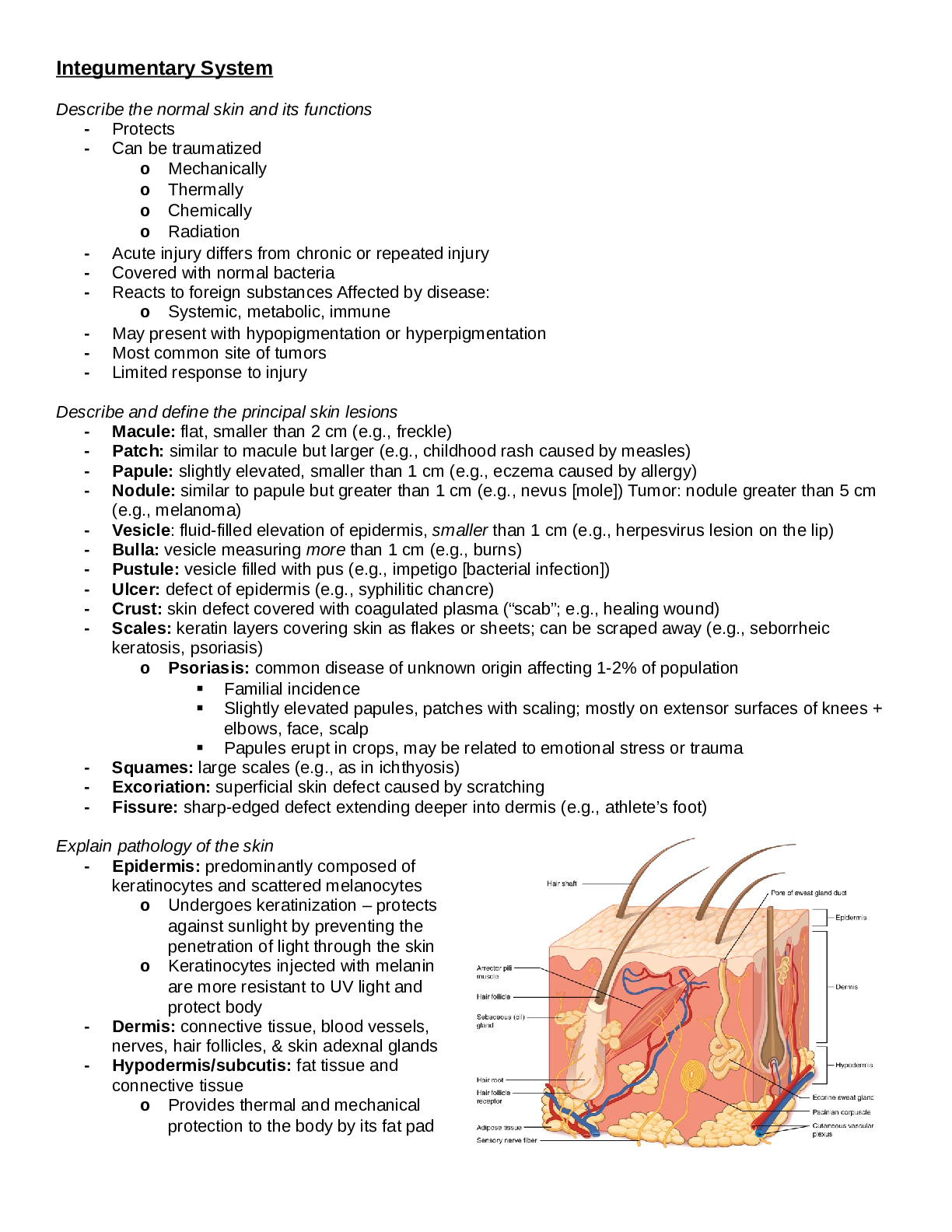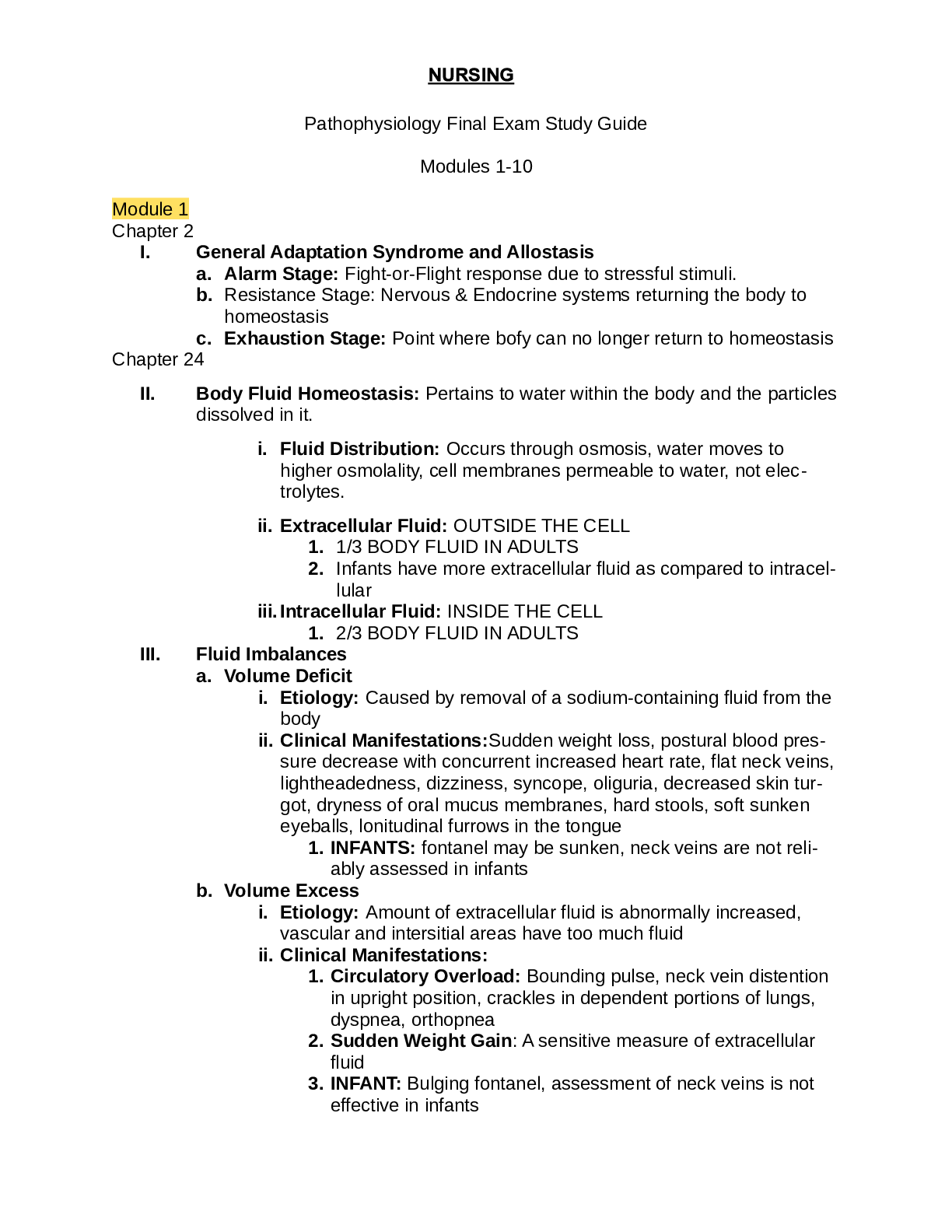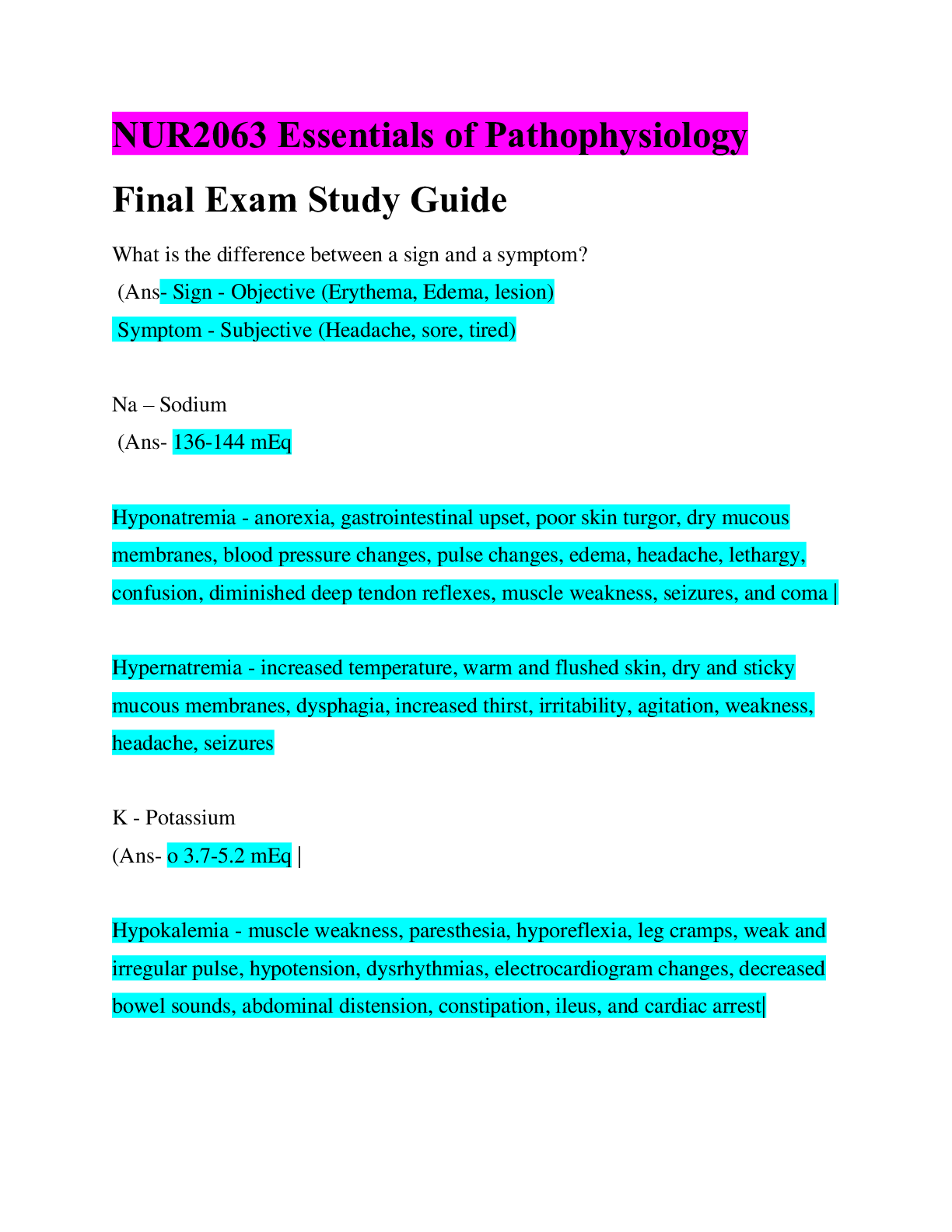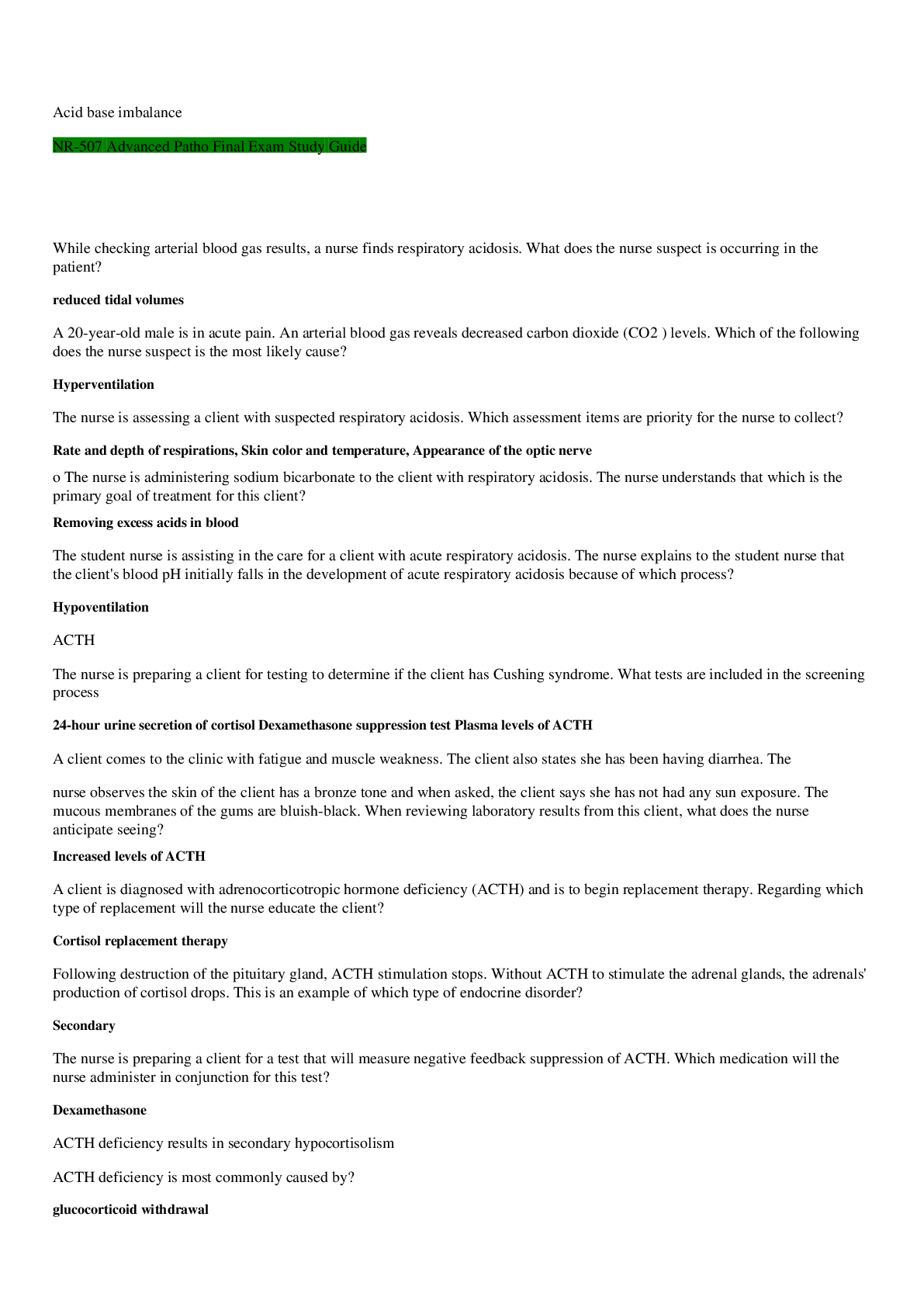*NURSING > STUDY GUIDE > NURS 6501 / NURS6501 Advanced Pathophysiology Final Exam Review Guide | Weeks 7-11 | Highly Rated | (All)
NURS 6501 / NURS6501 Advanced Pathophysiology Final Exam Review Guide | Weeks 7-11 | Highly Rated | Latest 2020 / 2021
Document Content and Description Below
NURS 6501 / NURS6501 Advanced Pathophysiology Final Exam Review Guide | Weeks 7-11 | Highly Rated | Latest 2020 / 2021 • Structure and Function of the Cardiovascular and Lymphatic Systems • ... Pathophysiological changes related to Pain, Temperature Regulation, Sleep, and Sensory Function • How does patient characteristics such as racial and ethnic variables impact altered physiology? • How does the pathophysiology of spinal injuries impact patients? • What is the impact of patient characteristics on disorders and altered physiology. Common Neurological and MS disorders and the pathophysiological nature of these issues in adults and children: Concepts of Neurological and Musculoskeletal Disorders Stroke • Cerebrovascular disease is the most frequently occurring neurologic disorder. Any abnormality of the blood vessels of the brain is referred to as cerebrovascular disease includes vessel wall abnormalities and vascular malformations, thrombotic or embolic occlusion, and increased blood viscosity or clotting. • Cerebrovascular disease causes o ischemia with or without infarction and hemorrhage. o The common clinical manifestation is a cerebrovascular accident (CVA) or stroke syndrome. o Hypertension is the greatest risk factor followed by other preventable risks. • CVAs are classified according to the pathophysiology and include ischemic (thrombotic, embolic, and hypoperfusion), lacunar (small vessel disease), and hemorrhagic strokes. • Ischemic strokes result from interruption in brain-blood flow with a core of irreversible ischemia and necrosis or infarction that appears pale (white infarct). o The zone around the infarction has reversible ischemia, is called the ischemic penumbra, and can regain neurologic function, particularly with thrombolytic treatment. o Leaking blood vessels can develop in the infarcted area, resulting in a hemorrhagic transformation (a red infarct) that can be exacerbated by thrombolytic therapy. o Reperfusion injury can occur with ischemic stroke. • Intracerebral hemorrhagic stroke is primarily associated with vessel disease related to hypertension. • Subarachnoid hemorrhage is associated with ruptured aneurysms, arteriovenous malformations (AVMs), or cavernous angioma. o Subarachnoid hemorrhage is bleeding into the subarachnoid space commonly associated with intracranial aneurysms, AVM, and hypertension. The expanding hematoma increases ICP, compresses brain tissue, reduces cerebral perfusion, disrupts the bloodbrain barrier, and causes inflammation and neuronal death. Secondary brain injury follows. Seizures and hydrocephalus can accompany neurologic deficits. Multiple sclerosis • MS is a chronic inflammatory disease involving degeneration of CNS myelin in genetically susceptible individuals. [Show More]
Last updated: 1 month ago
Preview 1 out of 17 pages
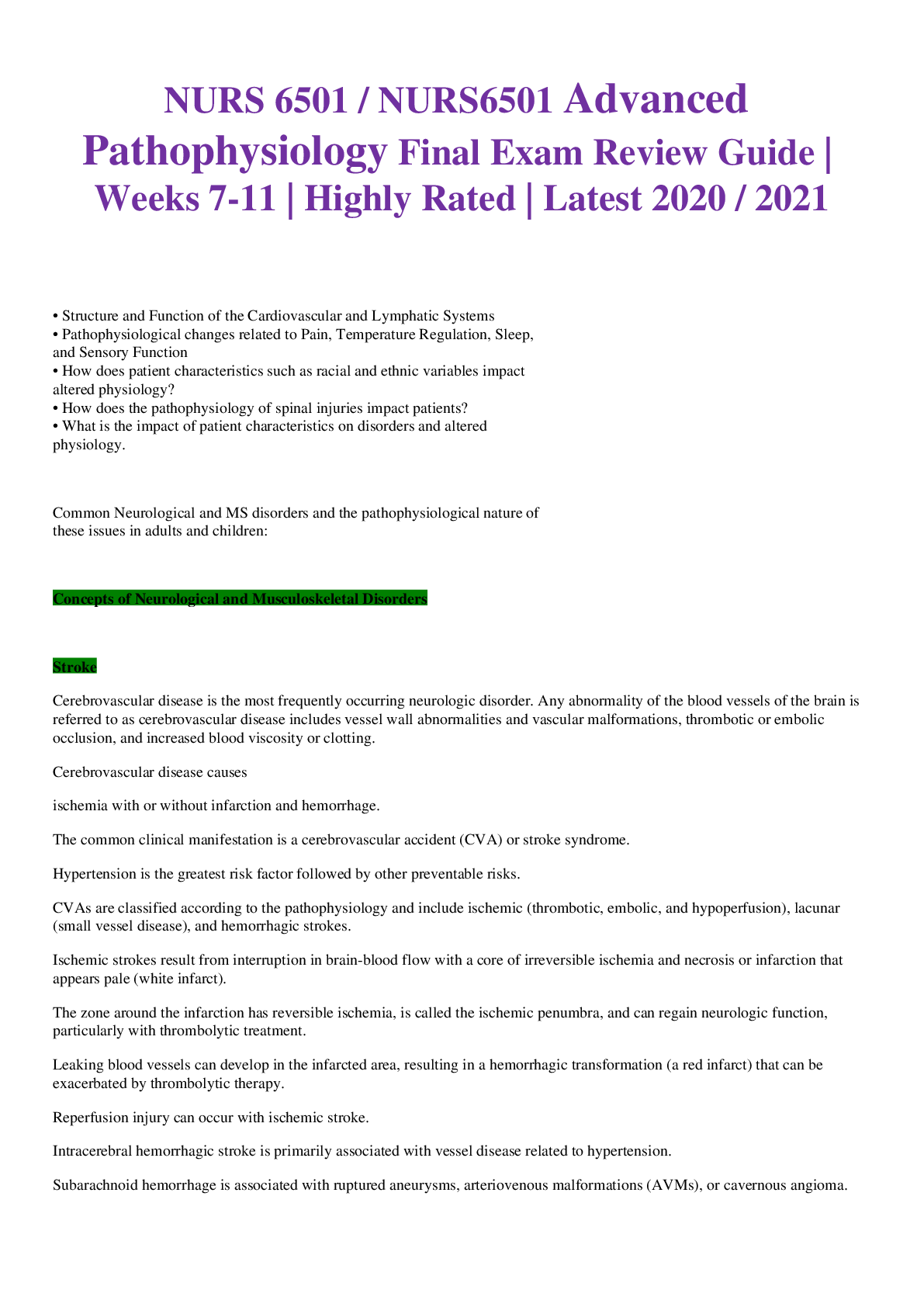
Reviews( 0 )
Document information
Connected school, study & course
About the document
Uploaded On
Jan 19, 2021
Number of pages
17
Written in
Additional information
This document has been written for:
Uploaded
Jan 19, 2021
Downloads
0
Views
53

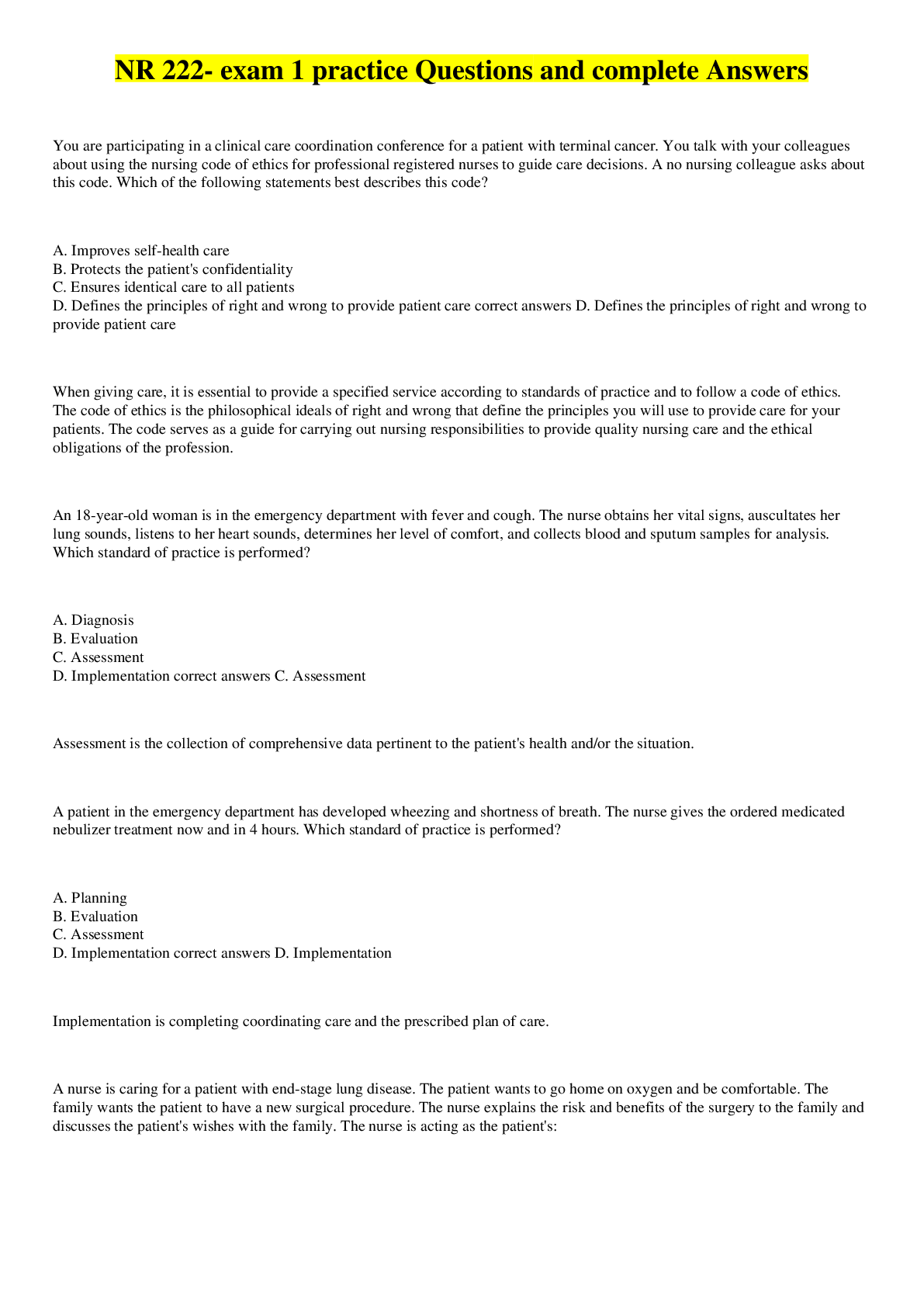
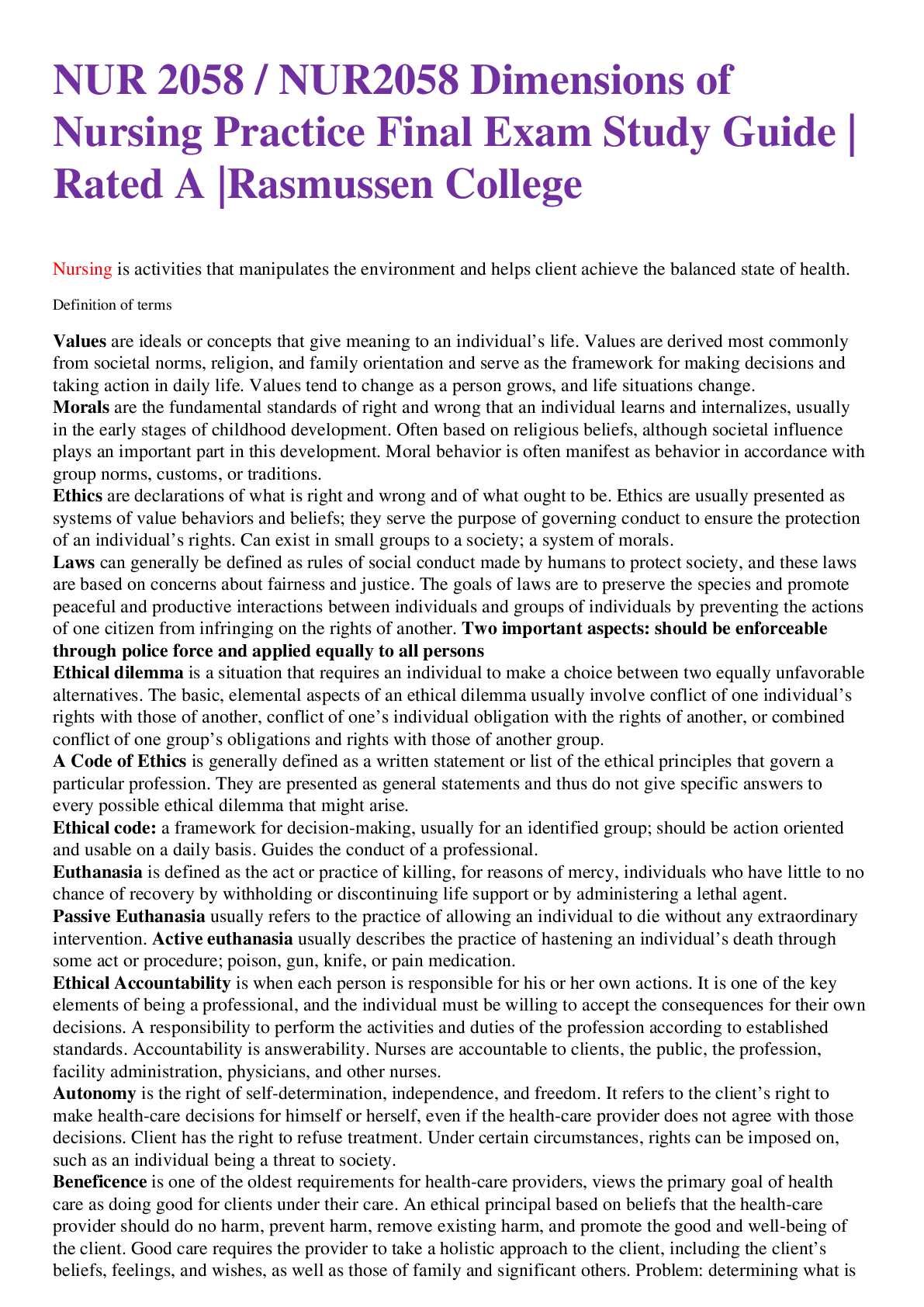

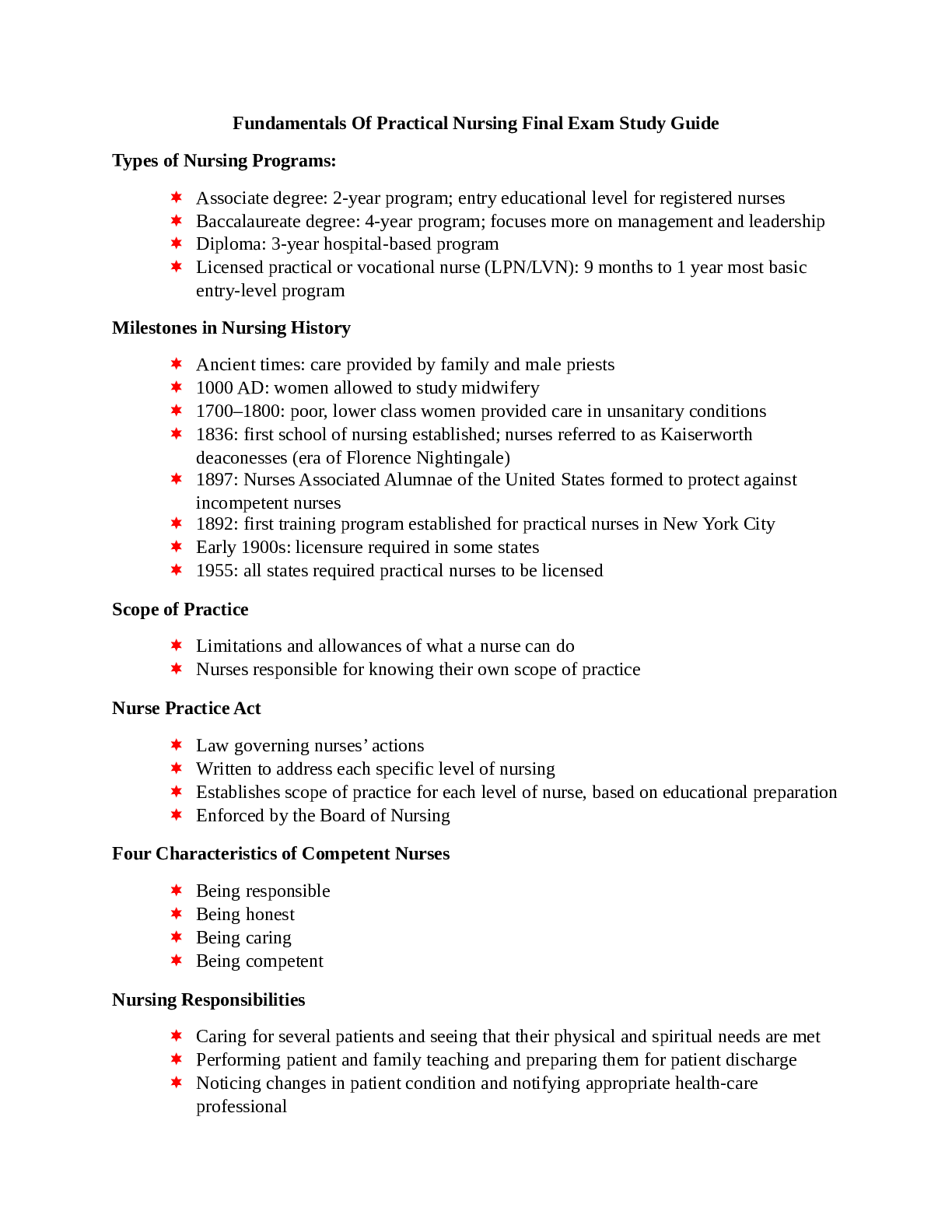

.png)
